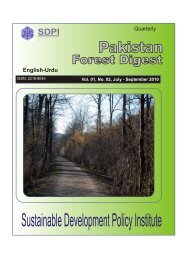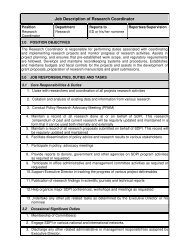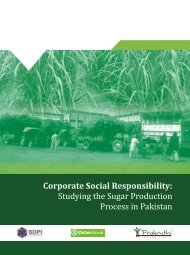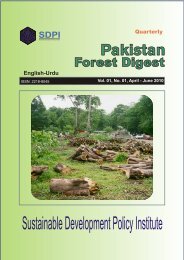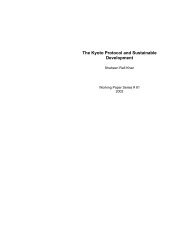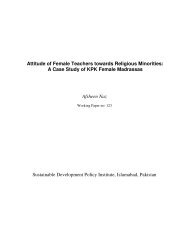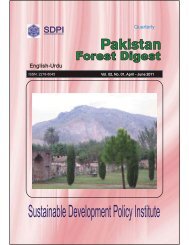Annual Report 2009-10 - Sustainable Development Policy Institute
Annual Report 2009-10 - Sustainable Development Policy Institute
Annual Report 2009-10 - Sustainable Development Policy Institute
- No tags were found...
You also want an ePaper? Increase the reach of your titles
YUMPU automatically turns print PDFs into web optimized ePapers that Google loves.
<strong>Annual</strong> <strong>Report</strong><strong>2009</strong> - 20<strong>10</strong>decision making in the electricity sector.For further contact Mr. Arshad Abbassi. ahabasi@gmail.comAlternative Resources of Energy in PakistanThe <strong>Sustainable</strong> <strong>Development</strong> <strong>Institute</strong> (SDPI) was assisted by the Heinrich Boll Stiftung (HBS),to research and report on alternative and renewable sources of energy for Pakistan. Solar energyhas the potential for meeting the energy needs in some of the more remote areas of Pakistan.Wind and geothermal sources have also been identified as potential realistic sources ofenergy. Pakistan is geographically located in one of the highest solar isolation areas in theworld; it is also located on a geology associated with geothermal activity. Wind has the potentialto play an important part of the energy supply mix, with wind corridors having been identified forwind farm development. The Government of Pakistan through the Meteorological Departmenthas quantified the wind energy generation potential for Pakistan.Pakistan has been experiencing an acute shortage of energy right across all sectors in particular,industry and through energy disruption to domestic users. These shortages have highlightedthe need for a reliable, cost realistic and effective sources of energy and an improvement in thedistribution of energy to facilitate development of the country. Pakistan currently relies disproportionatelyon thermal power generation from local gas fields and expensive imported oil to fuelboth government and privately owned and rented power plants. The poor communities of Pakistanrely on wood and dried dung to heat their homes and in food preparation. The effects of alack of clean energy on the poor community were part of the study with particular emphasis onhousehold air quality and how it affects women and children.The research conducted a general review of the renewable forms of energy available to Pakistanincluding, hydro, wind, biomass and biogas energy from wastes, solar and geothermaltechnologies. Hydro-power both as macro and micro projects are well established in Pakistanand are recognised as low cost reliable and renewable sources of power in Pakistan and havethe potential to fill the energy deficit.There was a consultation process with stakeholders from across the wide spectrum of users,environmental groups, developers, civil society and the Government being approached for theiropinions and ideas for the development of these resources. Pakistan has the potential to be energyself sufficient if it has the will to do so. Rationalisation of and implementation of the proposedinstitutional arrangements have facilitated Pakistan's ability to make use of various internationalfunding opportunities to develop its renewable sources for a low carbon future through,for example CDM mitigation and adaptation funding from the international community.For further information contact Mr. Shakeel Ahmed Ramay. Shakeel@sdpi.org26S u s t a I n a b l e D e v e l o p m e n t P o l I c y I n s t I t u t e



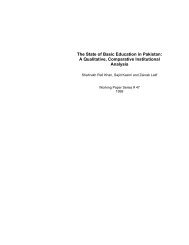
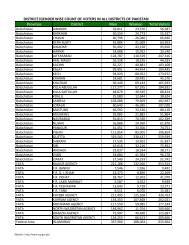
![(October - December, 2010) [13th SDC Special Bulletin]](https://img.yumpu.com/50118608/1/184x260/october-december-2010-13th-sdc-special-bulletin.jpg?quality=85)
